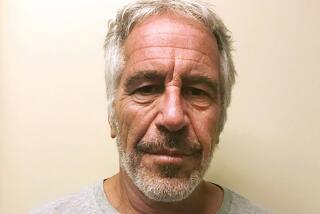Abe Caylor, 104; WWI Cavalry Soldier
Abe Caylor, a U.S. Army cavalry soldier who guarded the Panama Canal during World War I, has died. He was 104.
Caylor died April 26 at the Washington Soldiers Home in Orting, Wash. No exact cause of death was reported.
Slightly flattered, somewhat amused but increasingly irritated by repeated questions about the secrets of longevity, he came up with this retort: “Work hard and mind your own damn business.”
Which was pretty much what he did for more than a century.
Born Oct. 7, 1899, in the small town of Clarksville, Ind., where his carpenter father had built most of the houses, Caylor dropped out of school after eighth grade and worked on farms and in factories.
When the United States entered World War I in 1917, Caylor decided he should be a part of “the war to end all wars.”
“I was itching for action,” he told the Seattle Times in 2002. “It was one of those kid things. And if it involved horses, even better.”
On June 25, 1917, Caylor signed up with the Army. By 5 p.m. he was on a train for St. Louis, a recruit with D Troop of the 12th Cavalry.
All the horses in D Troop had names that began with “D.” Caylor’s was Dusty, but the soldier forever referred to him as his caballo muy malo, Spanish for “very bad horse.”
“We had a fight every morning before we started out,” the old soldier said. “You either rode him or you ended up on your head. He was the orneriest damn horse until he got it out of his system.”
The cavalryman was also trained in using a bolt-action rifle, a .45-caliber pistol and a saber.
Caylor was first ordered to Europe, but en route was diverted to Panama, then a U.S. protectorate, where he spent the war guarding the canal. No enemies ever threatened to attack the waterway, but Caylor regaled his grandchildren with tales of constant battles with mosquitoes. He was ordered to Europe a second time, but that order was rescinded when armistice was declared Nov. 11, 1918.
Instead, Caylor went to Jefferson Barracks, Mo., where he did witness men dying by the hundreds -- from the great flu pandemic that killed millions around the world.
“I got a touch of it and I felt like hell, but I pulled through,” he said in 2001. Isolated with about 100 men who were judged likely to survive, Caylor said little medicine existed to combat the pain, but “what they did is bring in a boxcar of whiskey and let them have all they wanted.”
When he was mustered out, Caylor returned to Indiana and married Garnett Van Buskirk. She died in 1974. They had seven children, six of whom survive, and many grandchildren, great-grandchildren and great-great-grandchildren.
In 1930, Caylor moved his family to Washington state, where he worked at Boeing Co. for 38 years. He helped build B-17s for World War II and later the 707 passenger jetliners.
Caylor, who gave up smoking on a bet in 1959, drove, delivered a local newspaper and maintained his home -- cooking, cleaning, shopping -- until he was 99. Only then could his children persuade him to move into the Soldiers Home.
More to Read
Sign up for Essential California
The most important California stories and recommendations in your inbox every morning.
You may occasionally receive promotional content from the Los Angeles Times.










